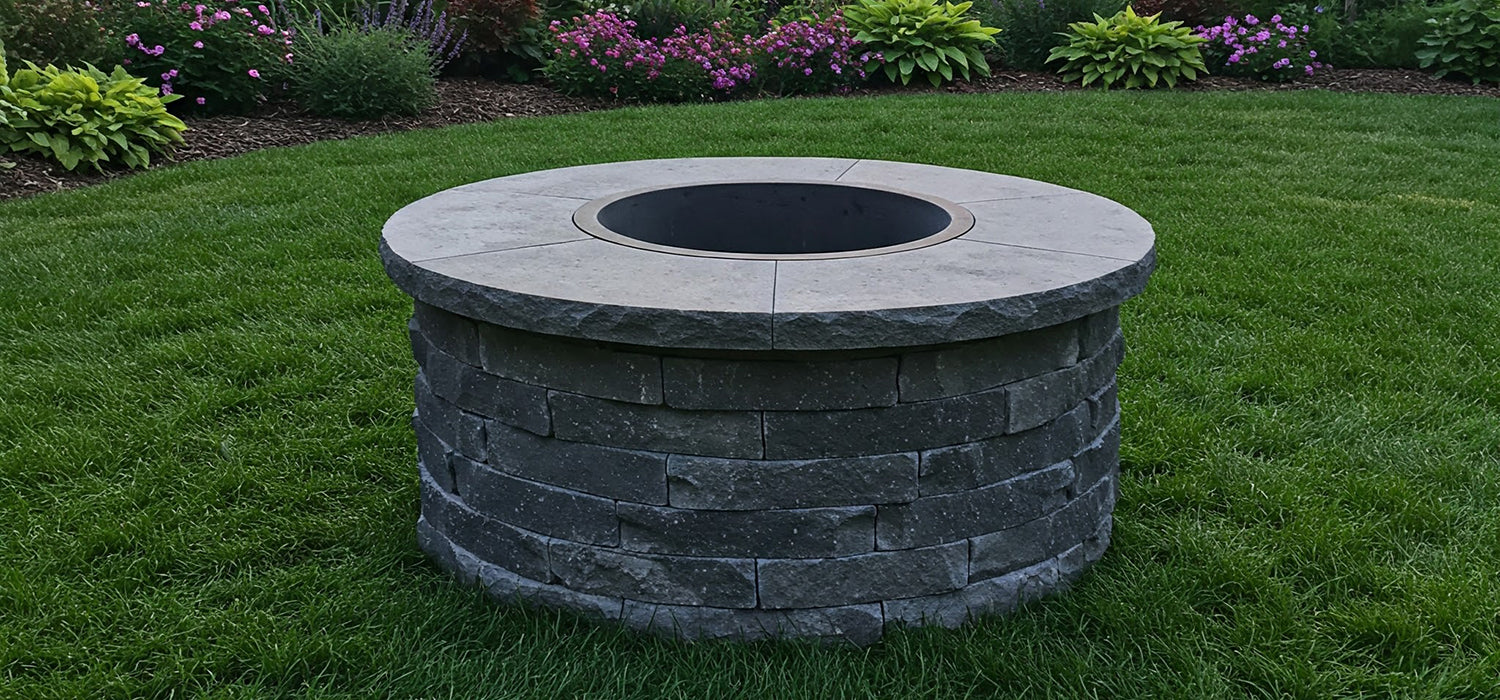
Why Does My Gas Fire Pit Keep Going Out?
Ever tried to enjoy a cosy evening by your gas fire pit, only for it to go out mid-sizzle? Frustrating, right? The short answer: it’s often a mix of low gas pressure, dirty burners, or pesky weather. Keep reading to learn how to fix your fire pit (and fire tables) for good!
Common Causes of Flame Extinguishing
When your fire pit keeps flickering out, it’s not just bad luck—it’s usually one of a few common causes. From gas supply issues to weather-related problems, there are several factors that can cause your flames to fizzle out. Let's break down the main culprits.
Gas Supply Issues:
Low Propane Tank or Interrupted Natural Gas Supply
Picture this: you're enjoying the warmth of your fire pit, and suddenly the flames flicker and die. Chances are, your propane tank is running low, or there’s an interruption in the natural gas supply. Without enough gas pressure, the flame just won’t stay lit.
Regulator Problems
Another sneaky issue could be a faulty regulator. It controls the flow of gas to your fire pit, and when it’s not working properly, you’ll notice irregular gas pressure. A regulator malfunction can lead to inconsistent flames or your fire going out completely.
Wind and Weather Conditions:
Strong Winds Blowing Out the Flame
Anyone with an outdoor fire pit knows how tricky the wind can be. A sudden gust can blow out your flames faster than you can say "s’mores." If your fire pit is in an open area with no protection, wind can be a major issue, especially on blustery nights.
Rain or Moisture Affecting the Burner
The British weather, of course, can’t be ignored. Wet conditions, whether it’s rain or even heavy morning dew, can interfere with your fire pit’s burner system. Moisture can block the gas flow, affect ignition, and cause rust, all of which can cause your fire to go out unexpectedly.
Burner and Ignition System Problems:
Clogged Burner Ports
If you’ve noticed that your flame is flickering or uneven, it might be time to check the burner. Over time, dirt, debris, or even rust can clog the burner ports, affecting the gas flow. If these aren’t cleaned regularly, you’ll soon find yourself battling a poor, unreliable flame.
Faulty Ignition System
Another culprit could be the ignition system. If the igniter or wiring is faulty, it might not be able to produce the spark needed to light the flame. A dirty or misaligned ignition can result in a fire pit that’s constantly turning off—frustrating, to say the least!
Troubleshooting Steps
Now that we know what could be causing the issue, let’s get our hands dirty with some troubleshooting. Here’s how you can address the most common problems and get that fire pit back in action.
Checking Gas Supply:
Refilling Propane Tank or Checking Natural Gas Line
First things first—check your gas supply. If you’re using propane, ensure your tank isn’t running low. For natural gas models, double-check the line for any interruptions or leaks. No gas equals no fire, so a quick refill or repair could save the day.
Inspecting and Adjusting the Regulator
If the regulator is the issue, it’s a relatively simple fix. Turn off the gas supply, and give the regulator a quick inspection. Tighten any loose connections, and see if you can adjust it to restore the correct gas flow. If you notice signs of wear or damage, it’s time for a replacement.
Protecting from Wind and Weather:
Using Wind Guards or Shields
If the wind is wreaking havoc on your fire pit, it’s time to invest in some wind protection. A wind guard or protective shield can help keep the flame steady, even during a blustery evening. It’s an affordable solution that makes a big difference in flame stability.
Covering the Fire Table When Not in Use
Moisture is the enemy of many outdoor appliances, and fire pits are no exception. If you live in a particularly rainy or damp area, consider covering your fire pit when it’s not in use. This will keep the moisture out of the burner system and prevent rust and corrosion over time.
Inspecting and Cleaning the Burner:
Cleaning Clogged Ports with a Brush
If your flame is flickering or inconsistent, check for any clogged burner ports. Grab a soft brush (a toothbrush works wonders) and gently clean out any dust or debris. If there’s a significant blockage, you might need to use compressed air to clear the gas ports.
Checking for Damage or Corrosion
Take a close look at your burner for any signs of wear, corrosion, or damage. Rusty or cracked burners can cause gas to flow unevenly, leading to poor flame performance. If the burner is beyond repair, it’s best to replace it entirely.
Repairing or Replacing Components
Sometimes troubleshooting isn’t enough, and certain parts may need replacing. Here’s what you need to know about repairing or replacing key components in your fire pit.
Ignition System Repair or Replacement:
Replacing Faulty Igniter or Wiring
A faulty igniter or damaged wiring can cause your fire pit’s flame to fizzle out. If you’ve tried cleaning the igniter and still face issues, it’s likely time for a replacement. Follow your fire pit’s manual to locate the igniter, and make sure to replace it with the correct part.
Burner Replacement:
Replacing Damaged or Corroded Burner
If cleaning doesn’t do the trick, your burner might need replacing. A damaged or corroded burner can seriously affect your fire pit’s performance. Replacing it will restore the flame’s consistency and heat, making your outdoor experience much more enjoyable.
Conclusion
Dealing with a gas fire pit that keeps going out doesn’t have to be a major hassle. Whether it’s gas supply issues, weather interference, or a clogged burner, most problems can be fixed with a little troubleshooting and maintenance. Regular care and attention will keep your fire pit—and your fire table—working reliably, allowing you to enjoy warm, cosy evenings with friends and family. And remember, if in doubt, don’t hesitate to call in a professional. After all, safety always comes first!
Other content we think you'll love
- How to Light a Gas Fire Pit: The Complete Guide to Safe and Easy Lighting
- How to Fix a Fire Table That Won’t Stay Lit
- How to Fix a Gas Fire Pit: Troubleshooting and Repairs Made Easy
- How to Light a Gas Fire Pit with a Lighter: A Step-by-Step Guide
- How to Repair a Gas Fire Pit: A Step-by-Step Guide
- How to Repair Your Outdoor Gas Fire Pit: A Homeowner’s Guide to Fixing Common Problems
- Why Does My Gas Fire Pit Whistle? Troubleshooting and Fixes
- Why Does My Gas Fire Pit Sound Like Wind? Here’s What’s Going On
- How to Turn On Your Gas Fire Pit: A Step-by-Step Guide
- How to Safely Put Out Your Fire Pit (Without Stressing or Guessing)
- Why Is My Gas Fire Pit Not Lighting? Here’s How to Fix It Fast

